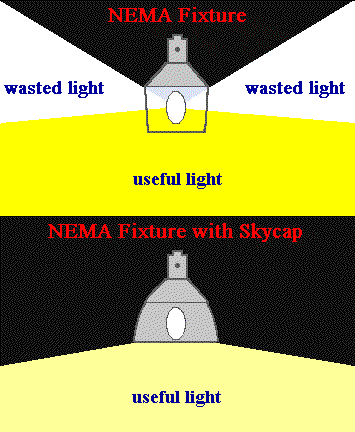
Here are some suggestions:
Security lights: Use motion sensors. If the primary purpose of a light is to provide security, place a motion detector so that it comes one whenever someone enters the area. Since the light is turned off when it isn't needed, money and energy is saved. An intruder may be startled by the light suddenly coming on and leave.
Roadway lighting: Low pressure sodium is the most energy efficient and astronomy-friendly type of lighting. However, high pressure sodium in a full-cutoff type fixture can produce better lighting and less sky glow in some applications. The newer flat bottom fixtures are gradually replacing the older style cobra heads that emitted most of their light sideways and created significant glare.
Signs: Signs should be illuminated from the top, not from the bottom.
Wattage: Use the right amount of light, not overkill.
Inexpensive Modifications: Some lights, such as the NEMA fixtures depicted above left, can be easily retrofitted with an inexpensive cap. If even that is deemed too costly, the inside of the fixture can be painted with aluminum paint or covered with silver duct tape -- which will increase the useful light and decrease the wasted light.